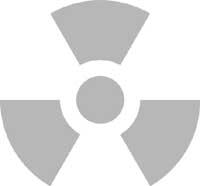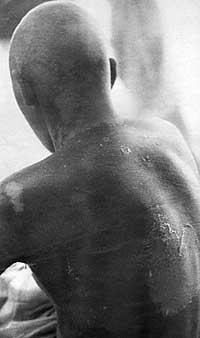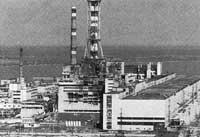Chernobyl's longest night

On April 29, a group of Swedish researchers began carrying out measurements of radioactivity that are carried out systematically. One of those programs that take place from time to time, but the one that has been observed that day has left his mouth full. The measuring devices reflected abnormal increases that apparently denounced the accident at a nuclear power plant in the area. At first they began to look for the imprint of this extraordinary event in Sweden, but soon this possibility was ruled out. Days later, sources from the then Soviet Union government claimed that Swedish researchers detected that pollution came from abroad: From Chernobyl.
This breakdown that surprised Swedish researchers continues to surprise. The Greenpeace group has denounced that the terrible data that occurred at the time of the accident did not reveal the reality. That is, the radioactivity that released the explosion was much greater than what was called. According to the latest data, Chernobyl also surpassed the radiation generated jointly by the two bombs dropped in Hiroshima and Nagasaki. 50 million curios were mentioned to confirm the severity of the accident, which according to Greenpeace were released about 140 million curios. Breakdown contamination reached an extension of more than 100,000 km 2.
And you reader, where and what was it when the accident happened? This is the question that has been heard in recent months. Some of us will remember well this moment, the moment when that great news came to us. However, for many, the data and information provided at the time were absolutely incomprehensible. They had to spend a few years to verify the seriousness of what happened. Remember that ten years ago some countries closed their borders to products from the contaminated environment. And from there nothing. Citizens across Europe showed the curiosity hitherto hidden with the directions and strength of the wind.
What do we know about what happened?
As for what happened that long night, at first little information was published. Then more data came, but of what really happened that April day, today different interpretations can be heard.
But what happened? In short, a complex failure of the cooling system in a central reactor caused the reaction to be out of control, causing a disfigured warming that caused the thaw of the lower part of the reactor. Graphite rods used to calm the fission reaction burned and a chemical explosion occurred.

This explosion caused the softening of the structure that protects the reactor and the expulsion of the internal radioactive material in the form of dust and gas. Hence the damn “radioactive cloud”. Turning off the fire inside the reactor was a great job. Despite this, the workers of the plant managed to shut down somehow. And we say it in some way because the medical recognitions made to the workers who worked on these tasks have not been made known so far. According to data provided by Greenpeace, about 800,000 workers participated in the cleaning after the breakdown.
And for the questions we come up with, unfortunately, there is no easy answer. Were the security conditions in the central location suitable? Was it planned in any control program that could cause serious accidents of this type? The future has shown us that the security situation of nuclear power plants in Ukraine, Belarus and Russia should give a lot to think about. However, it was very difficult to predict such a breakdown.
At the meeting of the Nuclear Safety Committee held in 1978, there was a profound debate on this issue, and the report that contains this clearly indicates that “the most serious theoretical accident would be the fusion of the fuel contained in the reactor by a failure of the cooling system. (...) Security systems are double so in case of failure of one, the second would enter into force automatically. Therefore, the probability of such an accident is totally negligible.”
Ten years later...
In Vienna “Txernobil 10 years later. Conclusions.” Those affected by the breakdown are undoubtedly the ones that have the most to do, but this meeting has aroused great interest among the Western powers. The meeting has served, among other things, to expand the information before the public, both about what happened 10 years ago and the medium-term consequences of the accident, which is the most important.

The health status of the population of Txernobil is especially worrying. All experts agree that the incidence of thyroid cancer has increased considerably. The thyroid influences growth and development and can alter the functioning of metabolism. Although it has so far been denied, most children living around Chernobyl have or will have thyroid cancer in the coming years. For now, one in 8,000 children have already developed this type of malignant cancer. The radiation emitted by the plant spread in various ways. Contaminated food, especially vegetables and milk, had a greater impact on children than air pollution. In addition to thyroid cancer, malformations and atrophy are the legacy that Chernobyl has left to new generations.
Of course, health effects are important. However, the psychological, ecological and economic damages caused by the accident cannot be ruled out. The social models based on agriculture prevailed in the areas and the accident forced to abandon the contaminated lands, some 375,000 people had to leave their lands and their homes, everything they had, and what may be worse, 270,000 people currently live in contaminated regions.
If something has come out clean of the Vienna summit, Chernobyl is to confess that it is more than the problem of Belarus, Ukraine and Russia. The help of the Western States is essential for the damage of the accident to begin to decrease. And so that we finally have cotton, in that region there are 12 other nuclear power plants like Chernobyl.
Buletina
Bidali zure helbide elektronikoa eta jaso asteroko buletina zure sarrera-ontzian











